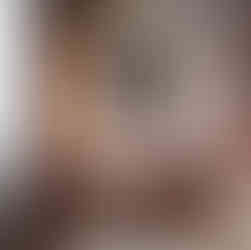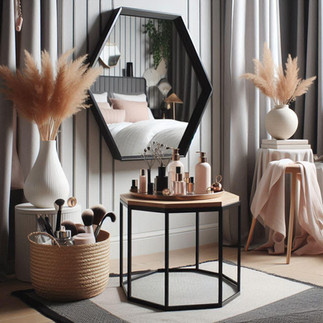Mirrors have long transcended their primary function of reflecting our images. In the realm of home decor, they are versatile elements that enhance aesthetics, create illusions, and add functionality. Here's why and how mirrors have become an indispensable part of interior design.
The Magic of Mirrors
1. Creating Space
One of the most celebrated uses of mirrors in home decor is their ability to create an illusion of space. In smaller rooms or apartments, strategically placed mirrors can make the area appear larger and more open. They reflect light and scenery, tricking the eye into perceiving more depth and space. This can be particularly effective in narrow hallways, compact living rooms, and cozy bedrooms.
2. Enhancing Light
Mirrors amplify both natural and artificial light, making spaces feel brighter and more inviting. By reflecting light sources, they help to distribute light evenly throughout a room. Placing mirrors opposite windows or near lamps can maximize their light-enhancing effect, turning a dim corner into a lively, well-lit space.
3. Adding Style and Elegance
Mirrors come in a variety of shapes, sizes, and frame designs, making them adaptable to any decor style. Whether it’s a sleek, modern mirror with a minimalist frame or an ornate, antique piece, mirrors can complement and elevate your interior design. They act as decorative art pieces that add visual interest and sophistication to your home.
4. Creating Focal Points
A well-placed mirror can serve as a stunning focal point in any room. Large, dramatic mirrors or uniquely shaped ones draw the eye and create a statement. Over fireplaces, in entryways, or above console tables, mirrors can anchor a space and add a touch of glamour.
How to Incorporate Mirrors into Your Home Decor
1. Entryway Enhancements
The entryway is the first impression of your home, and a mirror here can make it memorable. A large mirror can make a small entryway feel more expansive, while a decorative one can set the tone for the rest of the house. Pair it with a stylish console table and a vase of fresh flowers for an inviting look.
2. Living Room Elevation
In the living room, mirrors can be both functional and decorative. A large mirror above the fireplace or sofa can act as a centerpiece. For a more eclectic look, consider a gallery wall of smaller mirrors with varied frames. This not only reflects light but also adds layers of texture and interest.
3. Bedroom Brilliance
Bedrooms benefit from the calming effect of mirrors. Placing mirrors on closet doors or a full-length mirror by the wardrobe can be practical and aesthetically pleasing. Mirrors behind bedside lamps can enhance ambient lighting, creating a cozy and romantic atmosphere.
4. Bathroom Beautification
Bathrooms and mirrors go hand in hand. Beyond the basic mirror above the sink, consider adding a full-length mirror or decorative wall mirrors to amplify light and add a touch of luxury. Frameless mirrors can lend a contemporary feel, while framed ones can add character and warmth.
5. Dining Room Drama
A mirror in the dining room can reflect the beauty of your table settings and enhance the ambiance. A large mirror on one wall can make the room feel more spacious, while smaller, grouped mirrors can create a stylish, reflective mosaic.
Conclusion
Mirrors are more than just reflective surfaces; they are transformative elements in home decor. They create the illusion of space, enhance light, add style, and serve as focal points. By thoughtfully incorporating mirrors into your interior design, you can amplify the beauty and functionality of your home. Whether your style is modern, traditional, or eclectic, there's a perfect mirror to reflect your unique taste and personality.







Comments